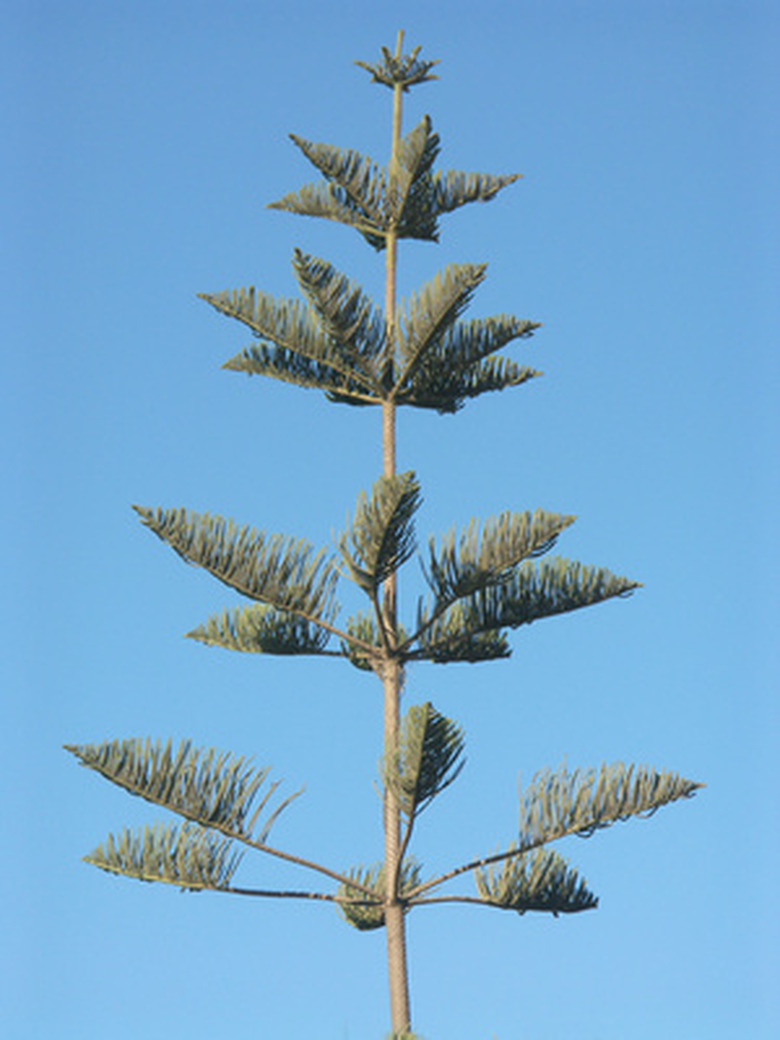Norfolk Island Pine Plant Care
The Norfolk Island pine belongs to the Araucariaceae family and is not a true pine tree. Norfolk Island pine is native to the Norfolk Island in the South Pacific and is grown outdoors in USDA growing zones 10 and 11 or indoors in a container. The tree is commonly found during the holiday season as a live Christmas tree.
Characteristics
The Norfolk Island pine grows up to a height of 100 feet when planted outdoors and has the appearance of a decorative Christmas tree with sparse branches. The tree grows upright in a pyramidal form and produces both male and female cones. The male cones are shorter and cylindrical in shape at 1 to 3 inches in length. The female cones are 3 to 5 inches spherical cones that form internal seeds. The tree possesses large surface roots, making it unsuitable for use in most manicured properties.
- The Norfolk Island pine belongs to the Araucariaceae family and is not a true pine tree.
- The Norfolk Island pine grows up to a height of 100 feet when planted outdoors and has the appearance of a decorative Christmas tree with sparse branches.
Planting Location
Norfolk Island pine trees grow best in a soil that possesses good drainage but will hold moisture. The tree prefers full sunlight as too much shade will cause the tree to droop. The Norfolk Island pine is hardy to plant outdoors in USDA growing zones 10 and 11; it will not tolerate temperatures below 40 degrees F. Norfolk Island pine trees grown in a container should be planted in a high quality potting soil and placed in an area with bright light.
Care
The Norfolk Island pine tree should be watered when the soil is dry several inches down during periods of drought. Potted plants should be watered when the soil is dry to one inch below the surface. Outdoor growing trees do not require fertilizer applications or mulch. Indoor potted trees should be fertilized with a balanced indoor foliage fertilizer during the summer months. Indoor plants should be placed near a humidifier during the winter months since the Norfolk Island pine prefers to grow at a humidity of 50 percent. The container can also be set on a tray filled with water and stones without placing the container to be directly in the water.
- Norfolk Island pine trees grow best in a soil that possesses good drainage but will hold moisture.
- The Norfolk Island pine tree should be watered when the soil is dry several inches down during periods of drought.
Propagation
Norfolk Island pine trees can be propagated by taking a cutting from the terminal leader during the summer months. The cutting should be 6 to 8 inches in length and dipped into rooting hormone prior to sticking it in rooting medium. The cutting will produce roots when placed in a warm location with indirect sunlight.
Problems
The Norfolk Island pine tree does not have major problems with pests or disease though it is possible for the plant to be infected with sooty mold or leaf spot. Sooty mold is spread by insects and appears as a black fungus on the needle leaves. The fungus can be washed off the leaves, but it will reappear if the insects are not controlled with an insecticide. Leaf spot is a fungus that causes spots on the foliage and can be controlled with a fungicide application.
- Norfolk Island pine trees can be propagated by taking a cutting from the terminal leader during the summer months.
- The Norfolk Island pine tree does not have major problems with pests or disease though it is possible for the plant to be infected with sooty mold or leaf spot.
